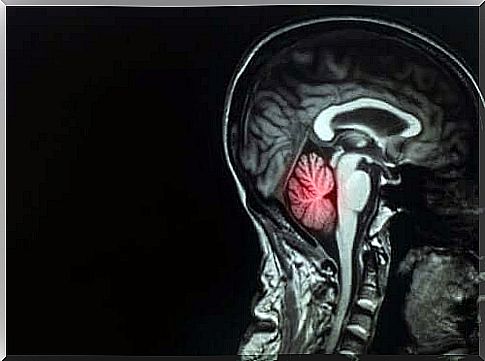Brain Metastases: Description And Treatment

Brain metastases are the most common types of brain tumors. They are also quite a challenge for doctors. They also account for about 90% of total brain tumor cases.
Estimates indicate that between 10% and 40% of cancer patients have brain metastases. This is because its incidence is increasing. This is close to the higher average survival rates of cancer patients, thanks to modern therapies.
Tumors have a different ability to metastasize into the brain and the ability to cross the blood-brain barrier because they use it to cover and protect the brain.
Metastasis is a feature that all cancer cells possess, which consists in the ability to invade both neighboring and distant tissues of the first tumor.
That is, cancer cells can migrate to other parts of the body and cause another tumor. The clinical metastasis of the brain varies and depends on the area affected, as do the associated risks of a seizure.
Causes of brain metastases

Brain metastases usually occur through hematogenous spread. That’s because the cancer cells from the primary tumor get into the blood, reach the brain, and spread.
In this regard, it is interesting to note that the spread of brain metastases is proportional to the blood flow in the area concerned. It is located in the body according to the following percentages:
- 80% of brain lesions
- 15% in the cerebellum
- 5% in the brainstem
The cells spread throughout the brain and penetrate the artery wall at the level of the first primary tumor. In this way, some cancer cells can then spread and enter the bloodstream.
Then the cell or cells that have entered the blood must be able to attach to the brain vessels by breaking the blood-brain barrier.
The blood-brain barrier and the absence of a lymphatic system provide the brain with an important protection against the ingress of many drugs and microorganisms, but ultimately it cannot prevent certain cells from entering.
How do the neoplastic cells cross the blood-brain barrier?

The mechanisms used by the neoplastic cells to break the blood-brain barrier are worth studying. However, it has already been shown that there are at least two mechanisms, namely the following:
- paracellular. That is, crossing the cells that make up the barrier. To do this, the cells must destroy the connections between cells and must also have certain proteins and inflammatory mediators.
- transcellular. This causes the immediate death of the barrier cells.
What happens after crossing the blood-brain barrier?
Once in the brain, the cells transfer to the microvasculature of this organ, and from there they migrate to the tissue.
Survival and proliferation from then on depend on the ability to maintain a good supply of oxygen and nutrients, which explains why these malignant cells remain very close to the blood vessels.
Treatments for brain metastases

We can mention the following options when it comes to treatments for brain metastases:
- Segmental resection. This is the removal of the tumor through small incisions. It is done through vitrectomy and has a number of benefits such as:
- being able to remove the effect of the masses
- eliminating the source of edema
- improving overall survival compared to radiotherapy alone
- Holocranial irradiation. Historically, this is considered the best treatment if the tumor is large. It has also been shown to be useful as an adjunct to surgical treatment, significantly reducing the incidence of post-treatment recurrence.
- Stereotactic radiosurgery. This treatment consists of targeted irradiation of the tumor. Survival has been shown to be better and less likely to relapse in patients with injury. It can also be better controlled, but there is no significant difference in survival rates in patients with two or three lesions.
- Chemotherapy. Brain metastases are usually quite resistant to chemotherapy. However, the integration of new therapeutic alternatives, such as target substances and immune checkpoint inhibitors, has intensified research in this area.
Conclusion
Brain metastases make up about 90% of total brain cancer cases. So it is necessary to make a diagnosis as early as possible to try to stop the progression of the disease.
There are currently many different treatments and their prognosis is constantly improving. Brain metastasis is a very aggressive form of cancer and there is still much to be researched in this area.









